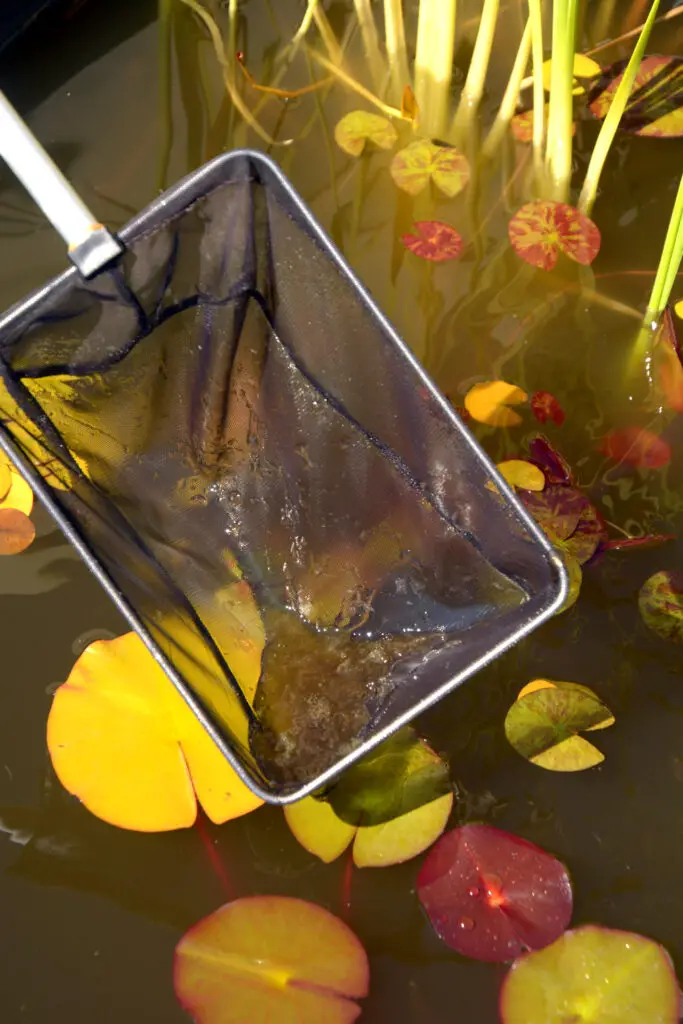
Owning a koi pond can bring you great joy. Watching the beautiful fish swim around their tranquil waters brings a sense of calm to any garden. But if you are a koi pond owner, you know there is no way around your pond getting a bit dirty over time. So once a year, it’s a good idea to give it a good once over to get it as clean as possible. So how should you clean your pond?
Steps to clean your pond: empty the pond until one foot of water remains, remove your koi, remove plants and accessories, use a hosepipe with a spray nozzle to clean the pond, rocks, and water features, and remove the sludge off the bottom of the pond, clean filters, add new water, replace fish.
Sometimes cleaning a pond can result in it becoming even more full of unwanted algae and other growth. When it’s listed, it might seem like a relatively simple affair to clean a koi pond. Yet each of these steps has its intricacies that would be best for you to follow. Knowing each step’s full ins and outs will ensure you clean your koi pond properly to provide your koi with the perfect environment to keep them happy.
Pro Tip: If you’re tired of wasting money and making costly mistakes on the koi-keeping hobby or are thinking about buying koi fish but don’t know where to start, I strongly suggest you check out this ebook. I recently read this ebook, and it contains SO much useful information, such as:
- 3 proven steps to identify koi fish diseases
- WARNING: 3 things you should NEVER do when it comes to caring for koi
- When to seek professional help when it comes to looking after your koi
How Do I Clean My Koi Pond?
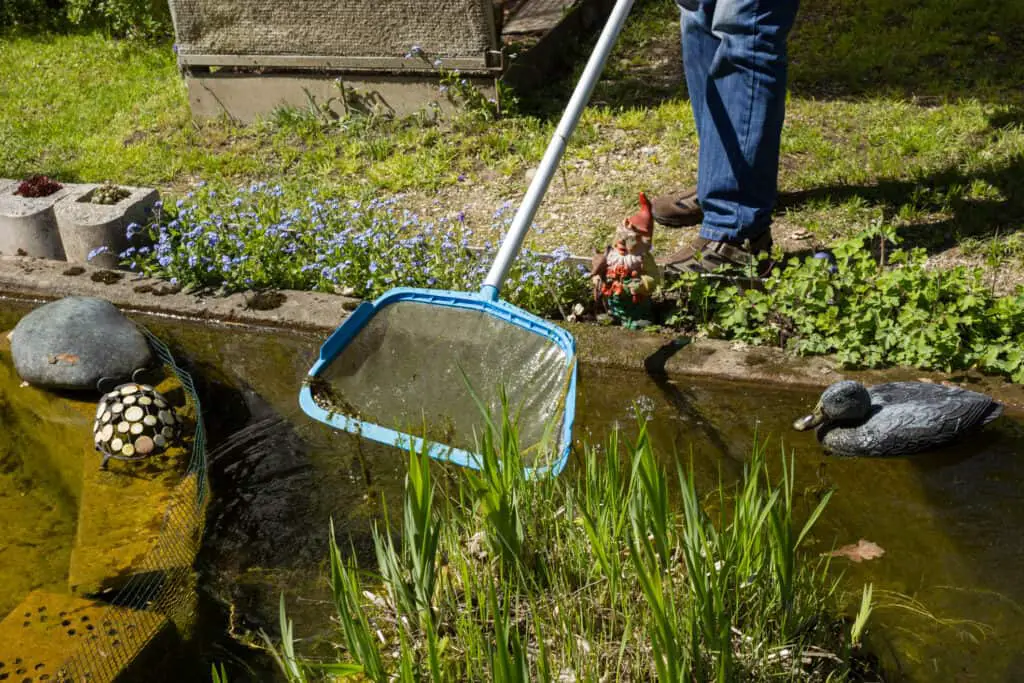
Whether you have a large or small koi pond, you will clean them in the same way. The optimum time to clean out your koi pond would be spring or autumn. It would be best if you did not attempt to give your pond a clean during the winter or too early in the spring. Your koi have been in a state of semi-hibernation, and their immune systems will be low during this time from lack of food, movement, and low temperatures. Disturbing them too much could cause adverse side effects.
Springtime is an excellent time to give your pond a good clean. You can clean out all of the debris that has landed in your pond over the winter and get it all nice and fresh for your fish for the coming summer months. Alternatively, an autumn clean will enable you to remove all of the extra leaves and other debris that might have landed in the pond during the autumn period.
Before starting to clean your koi pond, the first thing you should do is get all of your cleaning supplies ready. You don’t want to be halfway through your cleaning and realize you need something that will delay your finishing time; the least amount of time you disturb your koi fish, the better. Let’s look at what equipment you need and what steps you should follow to clean your koi pond. After having all your gear together, you can start the cleaning process.
What Equipment Do You Need To Clean Your Koi Pond?
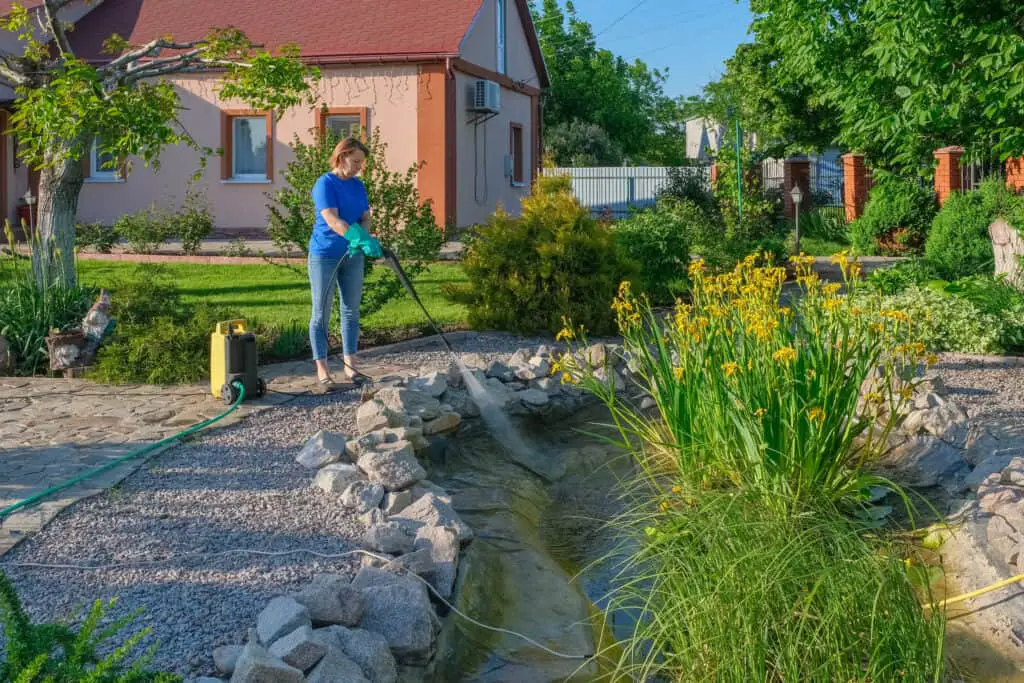
There are a couple of essential items you will need to have to clean your koi pond. Then there are a couple of things that are not necessary, but they will make the job easier.
- Small swimming pool or large enough container to hold all of your fish (if you are planning on removing your fish from their pond to clean)
- Garden hose with a spray attachment
- Skimmer net
- A toothbrush
- A pond vacuum (handy item for optimal cleaning)
- A de-chlorinator, you should be able to find this item at your local pet store (this is vital if you plan on using municipal water, which is often full of chlorine)
- Any gardening gear you might need to trim or repot your pond plants
Cleaning Your Koi Pond Step 1: Remove Surface Debris

Before starting with the significant pond cleaning, it would be best to remove any debris floating on the surface. You can do this with your skimmer net. Ensure that you get as much floating debris out of the water. Doing this will reduce your work for later.
Cleaning Your Koi Pond Step 2: Drain The Pond
Ensure that you are dumping the water into an area with good drainage. Getting the water out of the pond makes the cleaning process more manageable, as it gives you access to the bottom of the pond so you can get all the extra debris and sludge from the bottom. Your pond pump is an excellent tool for this part. You can use it to drain all but one foot of the pond’s water. This last foot of water is necessary for your koi to be able to swim around still.
At this stage, you can leave your koi in the pond while you clean, or you can remove them to the containers you should have on standby. If you plan to remove them, you should pump some pond water into the containers in preparation. Providing your koi with water, they are already familiar with and used to swimming around will prevent them from going into shock.
Cleaning Your Koi Pond Step 3: Removing Your Koi
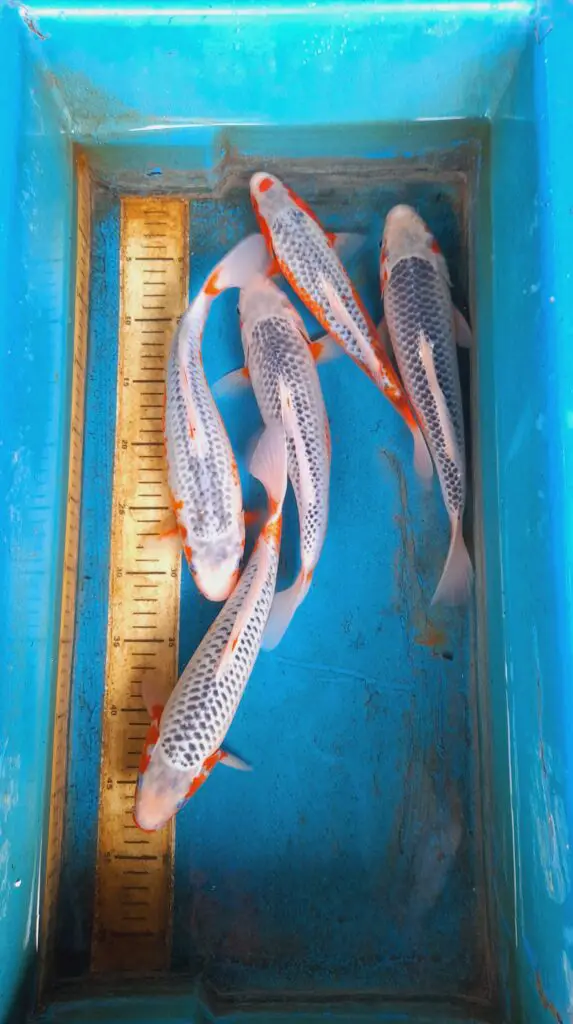
If you have a very large koi pond, this step is not completely necessary. You can opt to leave your koi in the pond, as you will be leaving at least a foot of water in your pond. If you decide to remove them from the pond, prepare yourself; this will get messy. Overall, it is better to remove your koi so that they don’t get harmed or too stressed out during the cleaning process.
Catch your koi with your skimmer net gently before placing them into the containers. Ensure you have placed your containers in a shady area for your kois’ comfort. If your container doesn’t have tall sides, it would be best to put something breathable over the top, preventing your fish from jumping out.
Cleaning Your Koi Pond Step 4: Remove Removable Objects
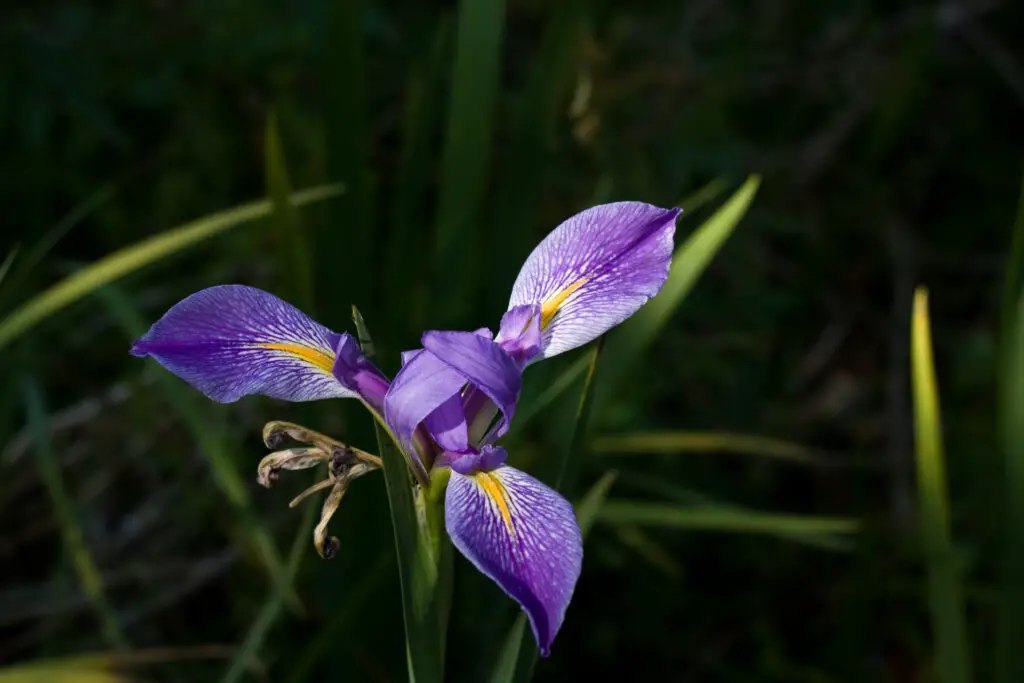
At this stage, you want to remove anything removable from the pond, including all accessories, aquatic plants, pond pumps, and removable filters. Place all your aquatic plants in the shade. Once you have done this, you can cover the aquatic plants with newspaper to protect them.
If you are removing underwater plants, you should place them in a container full of water in the shade.
You can also use this time to give your pond pump a bit of a clean in the remaining pond water, cleaning out any filters that are not self-cleaning. Use pond water for this cleaning process, as tap water can destroy any beneficial bacteria the filter may contain.
For the water features or pond accessories you have, now would be a good time to give them a good clean with the toothbrush so that they are nice and sparkly when you return them to the pond.
Cleaning Your Koi Pond Step 5: Wait An Hour
Once you have removed everything you can remove, you should wait an hour for the pond to dry out. This wait will make the cleaning of the debris and algae easier. Now would be a fantastic time to repot any aquatic plants or give them a good trim, getting them ready to return to their clean pond.
Cleaning Your Koi Pond Step 6: Clean The Pond

Now it’s time to clean. Use your hosepipe with the nozzle attachment to hose down the sides of your pond. Don’t spray too close to the pond lining, as you don’t want to create tears. You also don’t want to remove all of the algae. Some of it, especially the velvety type, is beneficial to your pond’s ecosystem.
Remember to give all fixed features, such as rocks and waterfalls, a good hosing down. Refrain from using any chemicals to aid in your pond cleaning. Chemicals can introduce toxicity that will have a detrimental effect on your koi fish’s health.
Once you have washed your pond down, remove as much of the debris from the bottom of your pond. This debris is often in sludge form and can get quite gooey, and you might even come across a dead frog or two. Once you have removed as much as you can by hand, you can use your pond vacuum cleaner if you have one.
Again remove as much as you can, but you don’t need to remove it all, as some of it can contain beneficial bacteria.
Cleaning Your Koi Pond Step 7: Return Pump And Accessories
Once your pond is as clean as you want it or as clean as it will get, you can start returning things. Replace your pump and any filters you may have removed, and return any of your pond accessories. You can wait until the pond is full before returning your aquatic plants.
Cleaning Your Koi Pond Step 8: Fill Your Pond With Water
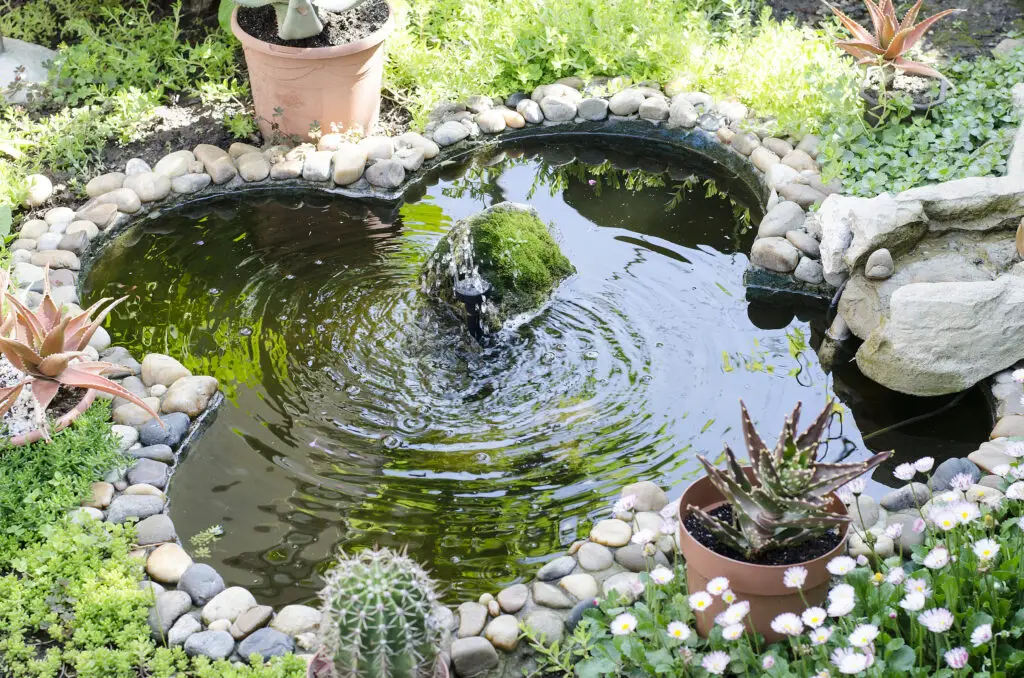
You can now fill your pond with fresh water from the hose. If you have used municipal water, you can add your de-chlorinator to the water once the pond is full, removing any chlorine from the water. You can now turn your pump on, allowing it to circulate the water for around 10 minutes giving the de-chlorinator time to work. After the 10-minute wait, you can return your aquatic plants to the pond, getting them ready for the return of your koi.
Cleaning Your Koi Pond Step 9: Returning Your Koi
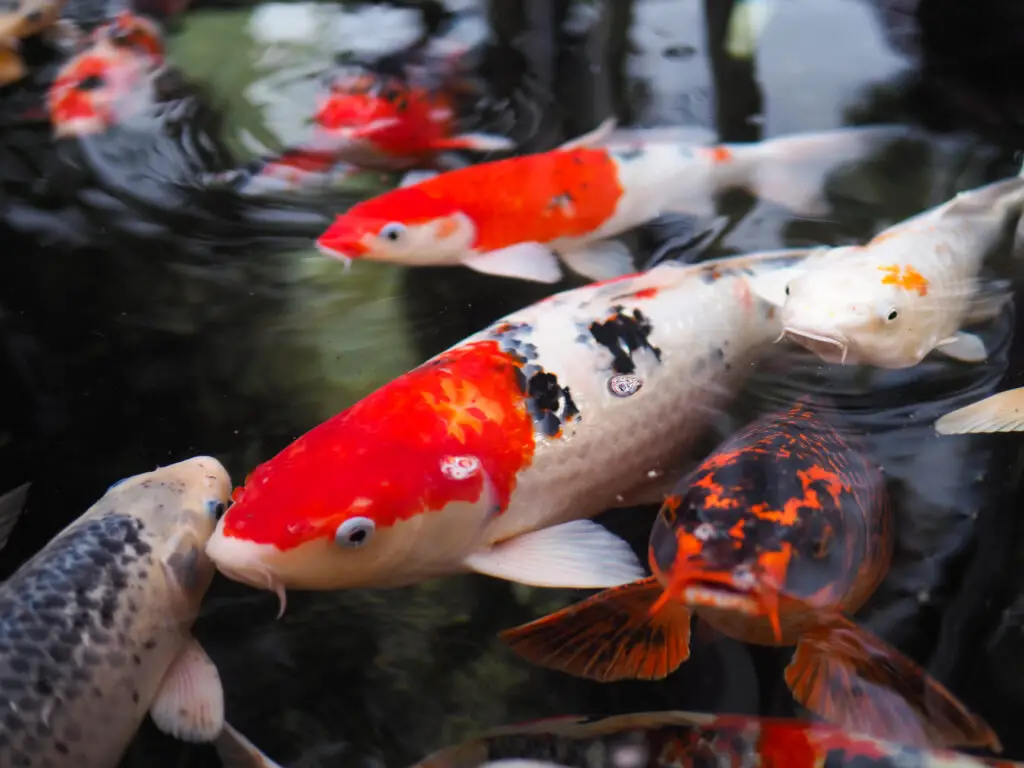
Once your clean pond is ready, it’s time to acclimate your koi fish to the new water. Dump some water out of their holding container and fill it up with some water from the pond, leaving them to get used to the clean water. You will need to do this several times before the fish become acclimated to the new water. This process is necessary as the ponds’ fresh water will be colder than the water the koi are in, and you do not want to shock your fish when you return them to water.
Now that your koi have had enough time to get used to their new water, you can use your skimmer net to catch them and gently return them to their pond. After that, your cleaning process is complete.
How Do I Clean My Koi Pond Without Draining It?
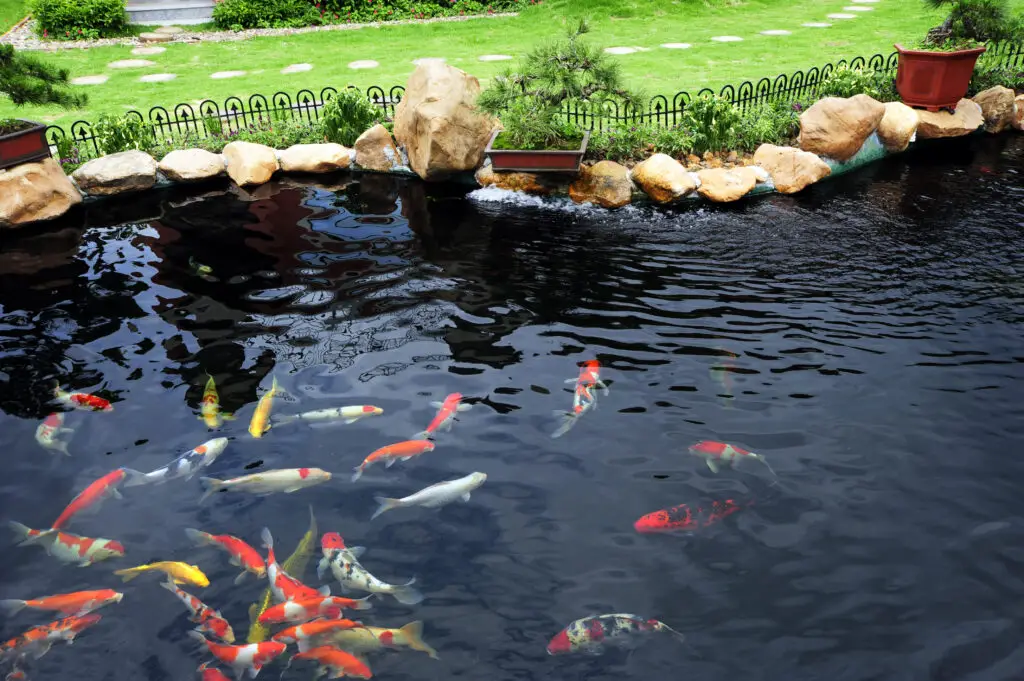
In some instances draining the water out of your pond to give it a good clean is not possible, or you might prefer not to remove the water for other reasons. Either way, you will still need to clean your pond, and therefore you will probably be looking for alternative cleaning methods. You can employ a few methods if you prefer not to drain your pond.
Method 1: Use A Skimmer Or Net To Clean Your Koi Pond

Removing surface debris is an excellent way to keep your pond clean. Removing floating objects, such as leaves, branches, twigs, bugs, etc., before it sinks to the bottom of your pond will help reduce bottom sludge. There are two types of surface debris collecting options available to you, skimmers and nets.
The first is a manual option, the net. Here you want to go for a wide net with a fine mesh, which will enable you to collect surface debris of all sizes. The second option is an automatic skimmer from which there is a variety to choose. You can have a floating, boxed, or submerged skimmer. The size of the pond and your needs will depend on which one you choose.
Method 2: Using A Pond Vacuum To Clean Your Koi Pond

A pond vacuum will enable you to clean sludge off the bottom of your pond without draining the water. You need not remove all of the sludge, but a reduction is always beneficial to the health of your pond. You can still use a pond vacuum even if there is water in your pond.
These days, pond vacuums come with various attachments to help you reach those hard-to-reach areas. If you have a relatively deep pond, get a pond vacuum with an extendable handle for easier use and ensure that it will keep its suction at deep depths.
Method 3: Remove Excess Algae To Clean Your Koi Pond
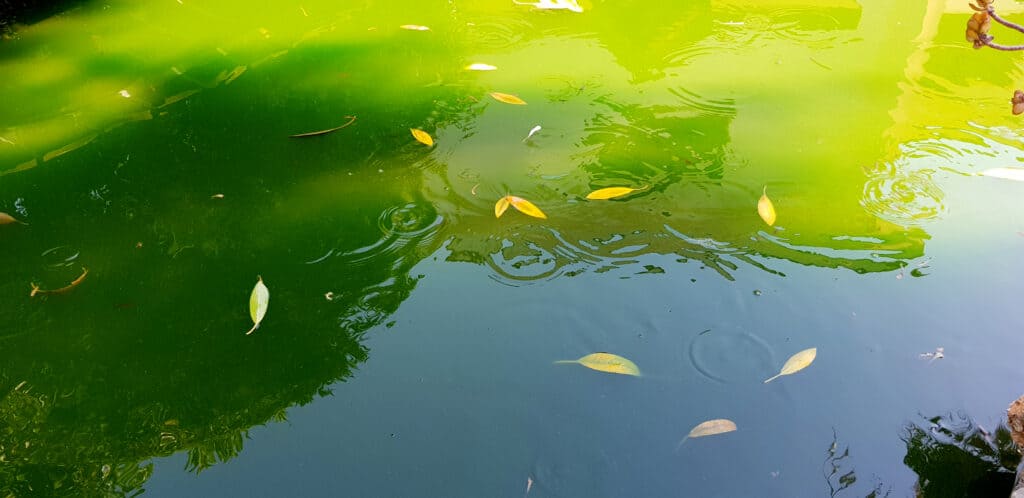
Algae is a massive contributor to a dirty pond. If you have excess algae levels and don’t wish to drain your pond’s water, do a deep clean to combat this problem. In that case, you can always add a UV clarifier to your filtration system. This extra addition will destroy your algae buildup at a cellular level, aiding in keeping your pond cleaner.
Method 4: A Good Filtration System To Clean Your Koi Pond
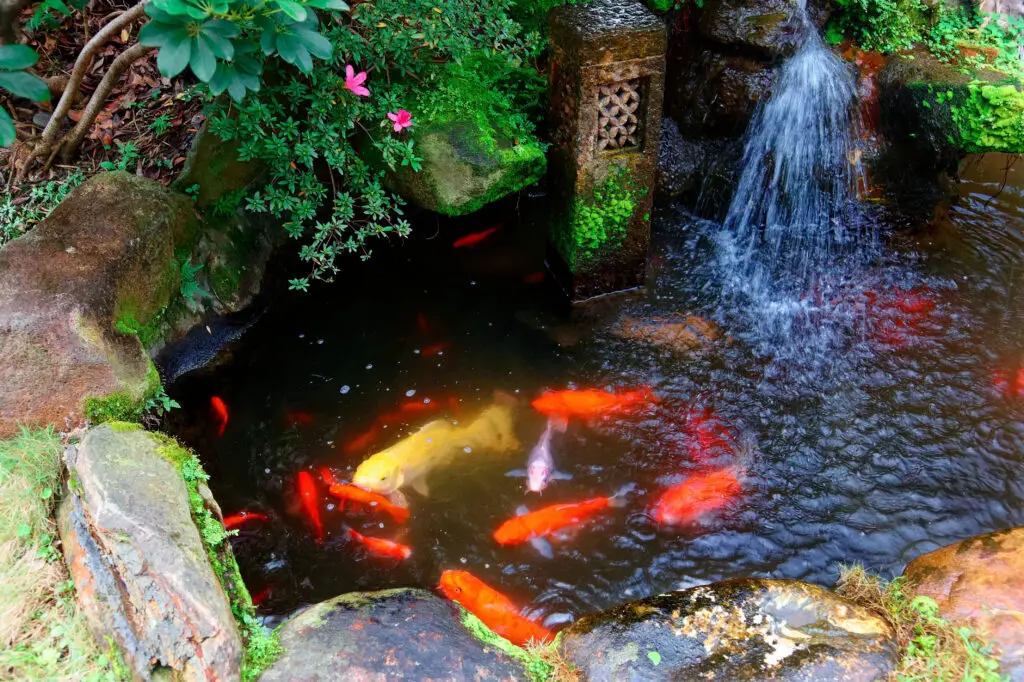
One great way to keep your koi pond clean without the hassle of draining and cleaning your pond would be to install an excellent filtration system. An efficient mechanical filter will reduce and prevent debris buildup in your pond. Couple this with a decent biological filter that will keep your pond’s water quality at a premium. You shouldn’t need the extra work of draining your pond to give it that deep clean.
Conclusion
If you want to give your koi pond an excellent deep clean, you can’t go wrong with draining your pond to get to the nitty-gritty sections. Draining your pond, washing the walls, vacuuming the bottom, and cleaning all of your accessories before adding new water will help get your koi pond looking great and keep your koi fish healthy and happy.
References
https://www.wikihow.com/Clean-a-Koi-Pond
https://homeguides.sfgate.com/koi-ponds-annual-cleaning-53993.html
https://www.angi.com/articles/how-clean-your-backyard-koi-pond.htm

